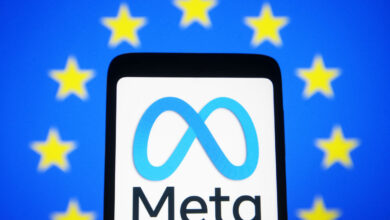Google DeepMind’s latest medical breakthrough borrows a trick from AI image generators

Much of the recent AI hype train has centered around mesmerizing digital content generated from simple prompts, alongside concerns about its ability to decimate the workforce and make malicious propaganda much more convincing. (Fun!) However, some of AI’s most promising — and potentially much less ominous — work lies in medicine. A new update to Google’s AlphaFold software could lead to new disease research and treatment breakthroughs.
AlphaFold software, from Google DeepMind and (the also Alphabet-owned) Isomorphic Labs, has already demonstrated that it can predict how proteins fold with shocking accuracy. It’s cataloged a staggering 200 million known proteins, and Google says millions of researchers have used previous versions to make discoveries in areas like malaria vaccines, cancer treatment and enzyme designs.
Knowing a protein’s shape and structure determines how it interacts with the human body, allowing scientists to create new drugs or improve existing ones. But the new version, AlphaFold 3, can model other crucial molecules, including DNA. It can also chart interactions between drugs and diseases, which could open exciting new doors for researchers. And Google says it does so with 50 percent better accuracy than existing models.
“AlphaFold 3 takes us beyond proteins to a broad spectrum of biomolecules,” Google’s DeepMind research team wrote in a blog post. “This leap could unlock more transformative science, from developing biorenewable materials and more resilient crops, to accelerating drug design and genomics research.”
“How do proteins respond to DNA damage; how do they find, repair it?” Google DeepMind project leader John Jumper told Wired. “We can start to answer these questions.”
Before AI, scientists could only study protein structures through electron microscopes and elaborate methods like X-ray crystallography. Machine learning streamlines much of that process by using patterns recognized from its training (often imperceptible to humans and our standard instruments) to predict protein shapes based on their amino acids.
Google says part of AlphaFold 3’s advancements come from applying diffusion models to its molecular predictions. Diffusion models are central pieces of AI image generators like Midjourney, Google’s Gemini and OpenAI’s DALL-E 3. Incorporating these algorithms into AlphaFold “sharpens the molecular structures the software generates,” as Wired explains. In other words, it takes a formation that looks fuzzy or vague and makes highly educated guesses based on patterns from its training data to clear it up.
“This is a big advance for us,” Google DeepMind CEO Demis Hassabis told Wired. “This is exactly what you need for drug discovery: You need to see how a small molecule is going to bind to a drug, how strongly, and also what else it might bind to.”
AlphaFold 3 uses a color-coded scale to label its confidence level in its prediction, allowing researchers to exercise appropriate caution with results that are less likely to be accurate. Blue means high confidence; red means it’s less certain.
Google is making AlphaFold 3 free for researchers to use for non-commercial research. However, unlike with past versions, the company isn’t open-sourcing the project. One prominent researcher who makes similar software, University of Washington professor David Baker, expressed disappointment to Wired that Google chose that route. However, he was also wowed by the software’s capabilities. “The structure prediction performance of AlphaFold 3 is very impressive,” he said.
As for what’s next, Google says “Isomorphic Labs is already collaborating with pharmaceutical companies to apply it to real-world drug design challenges and, ultimately, develop new life-changing treatments for patients.”
Source link




